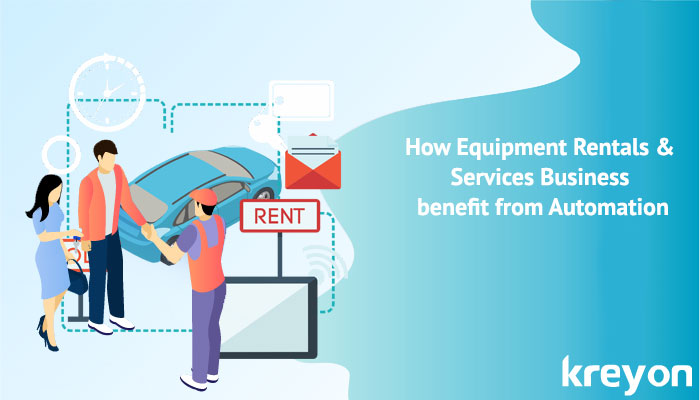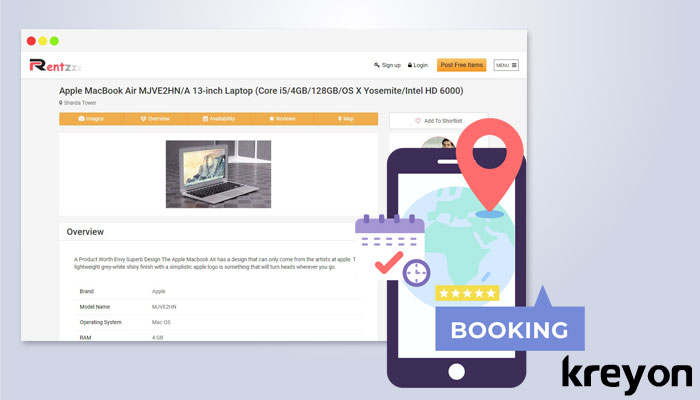How Equipment Rentals & Services Business benefit from Automation

As per Statista, the equipment rental business in the US alone is projected to be $54.36 billion in 2019. By 2021, the equipment rental business is forecasted to be $59.4 billion.
The equipment rental business is quite huge and growing at a steady pace. The construction and machine rentals are transitioning their business models. The automation of leasing equipment and use of subscription based models are hailed by rental companies.
The leasing companies specializing in equipment rental & services business are unearthing great competitive advantages with automation. Here’s a look at some of the cues.
1. Organise Equipment & Inventory
All equipment and inventory items can be tagged and automated using software. Accessibility of inventory items and equipment with accurate data is extremely important for smooth operations of rental business.
With a centralised inventory of all items and rental equipment, the business can be operated from anywhere. The insurance details, rental status of equipment, customer details, and availability of items can be tracked real time with automation.

2. Accurate Asset Tracking
The assets are the backbone of any rental company. The ability to track assets and equipment in realtime, knowing their exact location and condition can be made possible with automation software.
With automation the rental companies can locate their assets with GPS systems. The equipment utilisation, rental history and maintenance etc can be conducted through the software.
Rental companies can save a lot of time and money by using automation for tracking equipment, replenishing and servicing them as per the needs. The demand forecast can also be done accurately looking at the previous data trends for leasing and rentals.
3. Flexible Booking of Equipment and Services
The rental companies can provide easy to use portals for customers. These sites can be accessed by customers to book equipment and services they need. The subscription model options can also chosen as per the customer preference. For e.g. car rentals can have daily, weekly or monthly subscriptions.
The customers can also accept and request change in the leasing terms for equipment. Customers can also get discounts, check availability and get the equipment they need anytime. The security deposits and other terms can also be mentioned by the rental companies before renting the items.

4. Operational Data & Reports
The use of automation in rental business creates a trail for every transaction. Companies can see the list of their customers, their bookings, rental history, payments to date, leased items etc. The operational data can be used by the companies for better planning and management.
The key performance metrics for the rental business can be tracked by companies. The financials, pricing decisions, demand forecasting, utilisation of items etc can be done with the help of the software.
The management can also schedule reports for the day, week, month etc as per their requirements. The daily bookings, revenue collection, and rented items can be reported to the management.
5. Invoicing & Recurring Contracts
An online system can make revenue collection for rental companies coherent. When an equipment or inventory asset is let out on subscription basis, the customers can choose weekly or monthly payment options. The payments are deducted on recurring basis. The automated system helps in managing the invoicing, payments and recurring contracts for customers.
The system can also send automated invoices to customers when payments are deducted from their accounts using online payment gateways etc. The online processing of payments and subscriptions makes business operations effortless.

6. Reach More Customers
Automation helps a rental company to organise business operations and reach out to more customers. With an online booking system, the rental company has access to customers across locations and round the clock.
The customers from remote locations can also book equipment and services. If rental company has more than a single location, automation becomes even more beneficent to manage business across locations.
All the customer data is available online with automation. Companies can make use of this data for offering discounts, build long-term relationships with customers and market other products to them.
7. Accounting & Compliance
By using an automation system for rental business, the accounting needs of the organisation can be automated too. The revenue generated by the renting of equipment and services can be tracked online. All invoices and customer payments can be reconciled by the system automatically.
In addition to this, the system can also track all expenses, equipment purchases, maintenance, inventory items, services and other items required for accounts. The system can give glimpses into the performance with detailed accounting reports etc. The credit follow-ups, aging reports, account receivables and payables etc can be integrated into the equipment rental software.
The system has all the data with automation to prepare the necessary compliance reports for accounts etc. These reports can be filed with the tax authorities.

Kreyon Systems works with equipment rental and leasing companies to deliver automated platforms for managing inventory and business processes. If you have any questions or need assistance with equipment rental business automation, please get in touch.
